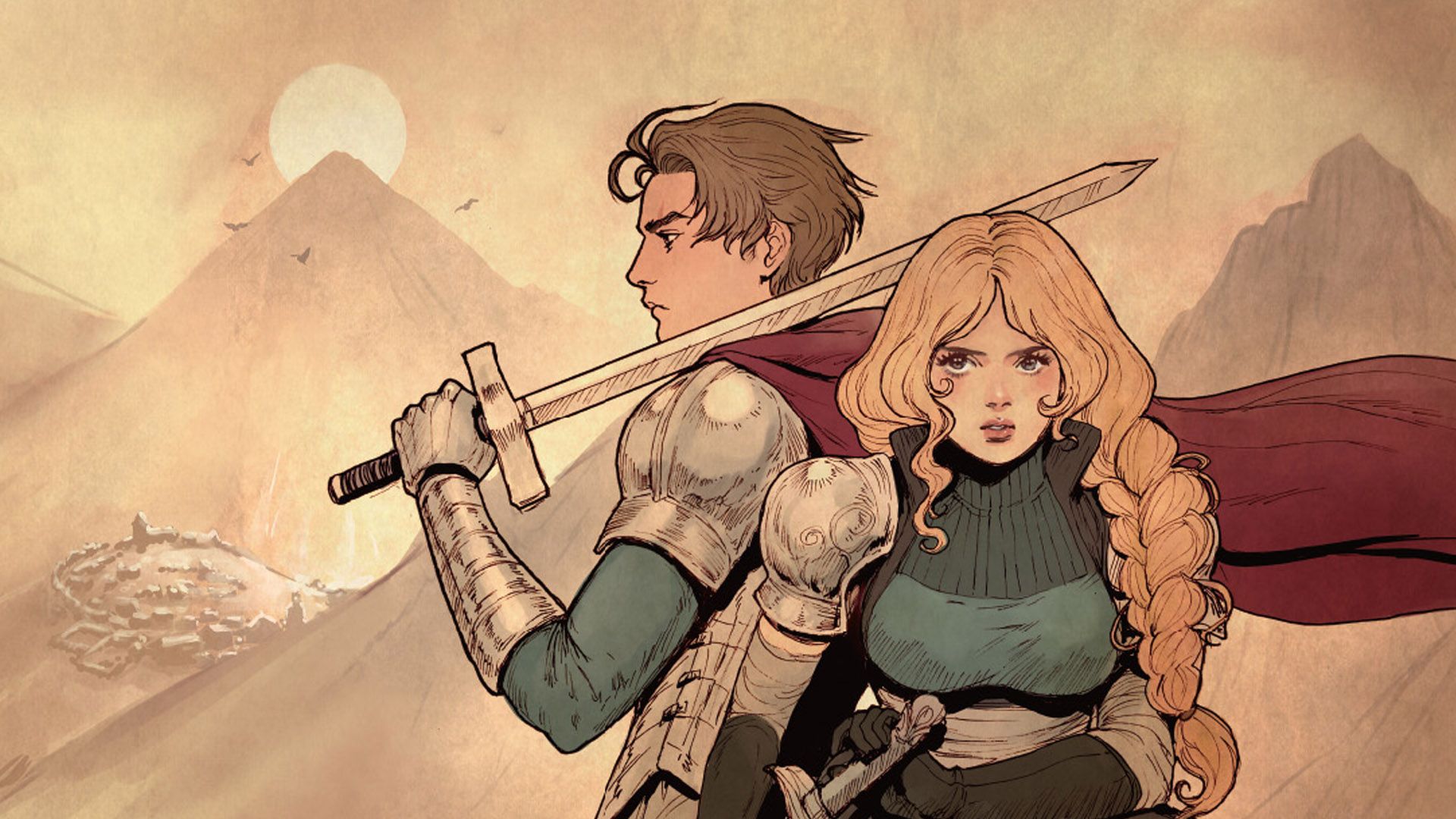Arcadian Atlas Review
Arcadian Atlas is a Final Fantasy Tactics-inspired SRPG by Twin Otter Studios that first came to our attention six or seven years ago. It’s faced a long hard road to get here, and many fans thought it would never see the light of day. Well, that day has come and Arcadian Atlas is here, courtesy of publisher Serenity Forge. So is Arcadian Atlas any good? Let’s find out.
Arcadian Atlas‘ visuals undoubtedly stir up nostalgic vibes, and the game looks better in motion than in screenshots. The detailed sprites have tons of great animations, most notably in their vividly expressive faces. This contrasts with the neutral expressions in the portrait art accompanying dialogue. Those portraits are nicely drawn, though some men looked like their beards were pasted on. The sprites had impressive beards, though.
The sprites sit atop lovely, tile-based 2D isometric environments. These environments look terrific, but because they’re not polygonal, you can’t rotate the camera to see all around. The chosen camera angles for battlefields are generally good, but sometimes units were difficult to see behind pillars or trees. The only other quibble I have with the presentation is that load times throughout the game are noticeable.
Vashti needs to move closer to her party so they can all benefit from Shield Triage’s defense boost.
The pixel fonts used across the UI are stylish without sacrificing legibility, which is important because there is a lot of text. The in-menu compendiums and conversations with barkeeps provide the lion’s share of exposition and worldbuilding, and are worth reading. Speaking of menus, they’re intuitive to navigate and never feel cluttered, thanks to streamlined gameplay systems.
Arcadian Atlas is more story-driven than gameplay-driven, so the character class and troop management systems are simpler than in SRPGs like Final Fantasy Tactics, which feature more robust job/class systems and complex troop management. I prefer Arcadian Atlas‘ style since I’m not the most patient or meticulous platoon manager, but I still like to casually experiment with different character classes and the branching skillsets therein.
If you’ve played an SRPG before, jumping into Arcadian Atlas is easy. Basically, it plays like a game of chess with the added elements of terrain height and type. Units take their turns based on overall speed, so there are no alternating player and enemy phases. A turn-order meter at the bottom of the screen shows who’s up to bat next.
Battles feel more like skirmishes because most battles only have you deploy around five units at a time. The areas themselves are manageably sized, so I never felt like I was spending a bazillion turns simply moving my troops across the battlefield. My only nitpick here is that when deploying my troops at the start of a battle, I couldn’t see where enemy units were located, making troop selection and placement a roll of the dice.
Expressive sprites are a visual delight.
You can hire additional troops at towns’ recruitment offices to march into battle alongside plot-relevant party members. These cannon-fodder troops can permanently die, but important plot-relevant characters live to fight another day. Another danger is that area attacks damage everyone within their blast radius, be they friend or foe. So, part of the strategy is keeping your troops out of harm’s way.
Regarding difficulty, there are four levels to choose from: Story, Relaxed, Standard, and Harder. You can change the difficulty any time the main menu is accessible. Be warned, though, that Arcadian Atlas has some late-game difficulty spikes with a couple of battles that border on cheap, even on the lowest difficulty settings. Be sure to save often as well, because Arcadian Atlas does not auto-save.
Arcadian Atlas supports both gamepads and a keyboard/mouse combination. I played with a gamepad and felt that button response could have been a little tighter. On the other hand, while the keyboard/mouse control response was tighter, the default button mapping was not to my liking. Thankfully, you can fully remap the keyboard controls, but gamepad users have to choose from several pre-configured schemes. The default gamepad mapping worked for me, but I would have liked the option to fully remap those buttons too.
War can make even the stoutest allies turn on you.
Jazz-influenced music is not what I’d expect for a game like this, but the pieces are nicely composed and generally work within the game’s context. My big issue is that there is only one battle theme used throughout the game. Since you spend most of Arcadian Atlas in battle, I would have liked a variety of battle themes to spice things up. The battle theme, while enjoyable, grew tiresome after a while, and its main saxophone melody sounded like sped-up “porno funk.” That is not the sonic vibe I look for in a game about civil war and political unrest.
Arcadian Atlas‘ story begins in the Dantalion kingdom. Dantalion is in turmoil after a lengthy, if tenuous, peace following a massive war with the land of Volin. Dantalion’s beloved King Tirgan is dying, and his current queen (and second wife) Venezia seeks his throne to rule as queen absolute. She even deemed the king’s two daughters from his previous marriage as illegitimate heirs to the throne. The elder daughter, Lucretia, is inciting a rebellion to win back the throne, while the younger, Annalise, is in exile.
In the midst of this emerging civil war exist our heroes, Vashti and Desmond — two lovers who wind up on opposing sides of the conflict between Lucretia and Venezia. Nothing is as it seems during this period of upheaval where difficult decisions must be made and living is a luxury for people simply trying to survive. Speaking of decisions, several pop up throughout the game that subtly influence dialogue and outcomes.
Desmond bolsters his skills.
The story is nicely written, though the dialogue sometimes reads stiffly. In addition, there are moments of inconsistent worldbuilding, a couple of unresolved plot threads, and times characters have omniscient knowledge they should not have, given the circumstances. The average player would say I’m splitting hairs here and should just sit back and enjoy the ride. More astute players, however, won’t wave these off so easily. Regardless, my biggest issue with the storytelling is that the skip cutscene feature does not pause at decision junctures, causing the game to make decisions for you if you wait too long.
A fulfilling RPG experience that doesn’t require a 50+ hour time commitment is always welcome for those of us with busy schedules. The 13 or so hours I spent on a single playthrough Arcadian Atlas was time wonderfully spent. With its expressive sprites, fun gameplay, robust writing, and jazzy music, it is clear that Arcadian Atlas was crafted with lots of heart and is definitely worth a look.
Source: RPGFan


